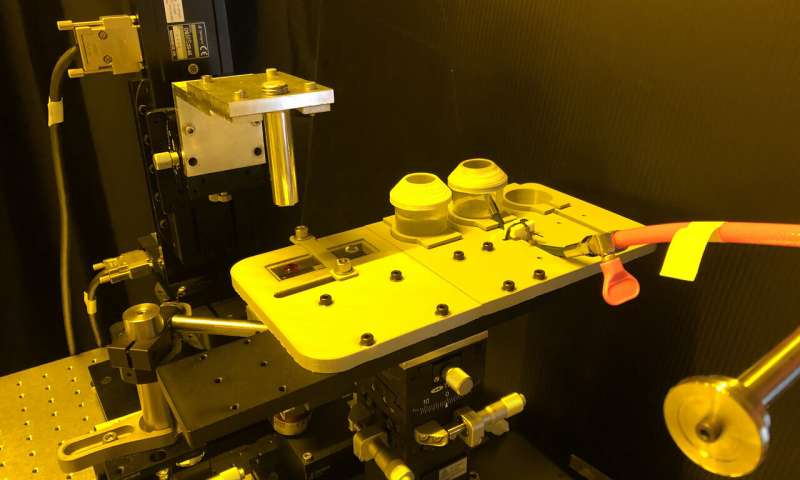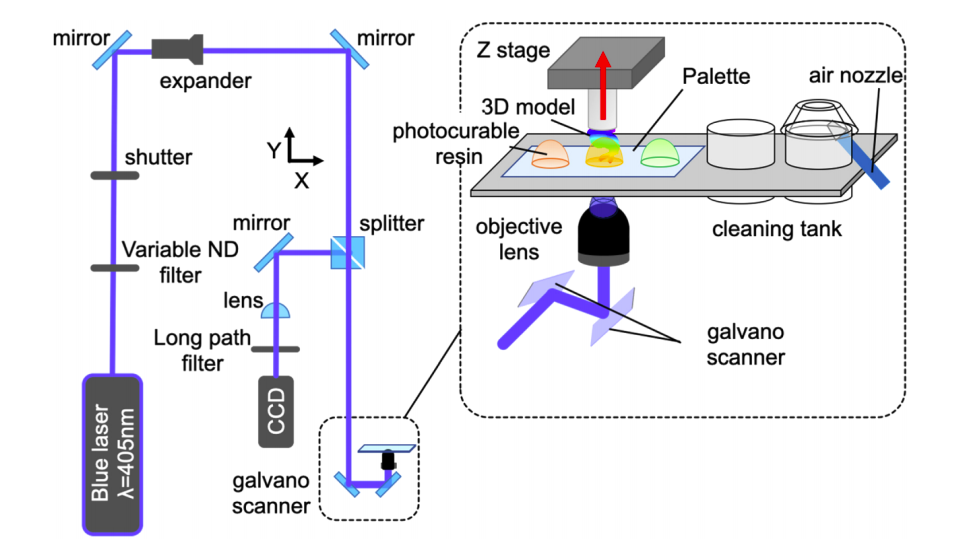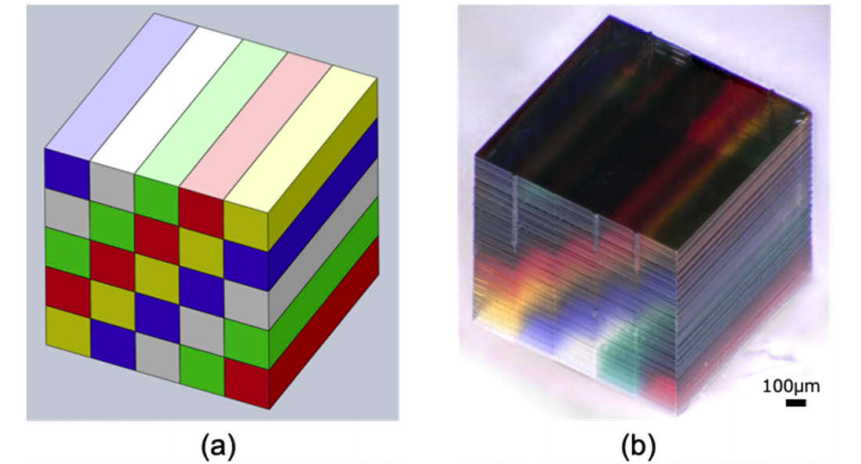Researchers from the Japanese-based Yokohama National University (YNU) have devised a new 3D printing method, that’s capable of 3D printing multicolor microstructures using different materials.
The team’s stereolithography (SLA)-based technique involves suspending several resins in a droplet state, which allows them to be exchanged during printing without causing voids or cross-contamination. Leveraging their novel production process, the scientists created a number of multicolored multi-material objects, while producing less wastage, and without causing voids.
In future, the researchers claim that their new printing method could be used to produce a range of optical parts, such as sensors and actuators, or even be used within the healthcare industry.
“Combining multiple kinds of materials can be used to create a function that cannot be realized with a single material,” said Shoji Maruo, Team Leader of the research project at YNU. “Methods like ours, that allow single-step fabrication of multi-material structures eliminates assembling processes, allowing the production of devices with high precision and at a low-cost.”

The attraction of multi-material 3D printing
Using a multi-material 3D printing approach, it’s possible to harness the features of various different resins to create optimized highly-functional structures. In recent years, the enhanced characteristics demonstrated by such objects, have led researchers from all over the world to develop their own multi-material printing methods.
Researchers from Columbia University have created an alternative version of SLS nicknamed ‘Inverted Laser Sintering,’ which sinters more than one type of powder at once. German 3D printer manufacturer voxeljet, meanwhile, has optimized its High Speed Sintering (HSS) process to provide parts with multi-material properties.
Stratasys has also offered a multi-material solution for the last few years, via its J750 system, which it debuted at Formnext 2017. In terms of SLA-based processes, it’s a similar story, and numerous different approaches have been introduced, but according to the Yokohama scientists, these have each had similar flaws. Within existing multi-material SLA, resins are extruded, and then promptly switched within the same channel.
The resulting cross-contamination, prevents the resins from being reused and they often need to be replaced, leading to increased material waste. Although a cleaning process can be introduced to reduce wastage, this usually limits the number of resins that can be used, defeating the object of multi-material printing in the first place.

The Yokohama team’s novel 3D printing method
In order to overcome the drawbacks of previously-developed SLA techniques, the Yokohama team developed a two-stage cleaning process. Firstly, the team created a glass palette that stores multiple droplets of resins and two tanks of cleaning solvent. The palette was then mounted onto a linear translational stage, where an air blowing unit in the second tank was used to dry the materials, removing any potential for cross-contamination.
While testing their novel 3D printing method, the researchers noticed that when they swapped the photocurable resins, bubbles began to form in the 3D model. Finding it difficult to suppress the air bubbles by slowing the process down, the scientists experimented with moving the model horizontally, while holding it above the palette and leaving a small gap.
Utilizing their revised production method, the team were able to push the bubbles out of the print area, enabling objects to be 3D printed that didn’t feature any voids. The researchers later re-tested their technique, by placing multiple different photocurable resins into their palette, and using them to fabricate a wide range of tiny microstructures.

In one such experiment, which took six hours to complete, the team created a multicolored 50-layer cube by exchanging five colors of resins 250 times. Summary evaluations of the 3D printed object validated the scientists’ method, as they had managed to integrated multiple resins into one product, without causing any contamination or voids. According to Maruo, the process could potentially be replicated with a variety of other printing materials.
“This method can be applied not only to multicolor resins but also to a wider variety of materials,” said Maruo. “For example, mixing various ceramic micro- or nanoparticles with a photocurable resin can be used to 3D print various types of glass. It could also be used with biocompatible ceramic materials to create scaffolds for regenerating bones and teeth.”
Following the success of the team’s initial tests, they concluded their novel SLA 3D printing approach to be a success. Not only had the scientists managed to prevent any cross-contamination, but they had demonstrated that four different materials could be used at once. In future, the team predict that their technique could be deployed in the production of functional end-use devices for applications in the healthcare sector.
“The ability to make multi-material microscale optical elements using 3D printing could aid in the miniaturization of optical devices used for medical treatments and diagnoses,” concluded Maruo. “This could improve the ability to use these devices in or on the body while also enabling them to be disposable, which would help provide an advanced and safe medical diagnosis.”
The researchers’ findings are detailed in their paper titled “Multi-material microstereolithography using a palette with multicolor photocurable resins,” in the Optical Materials Express journal. The research was co-authored by Taiki Maruyama, Hotaka Hirata, Taichi Furukawa and Shoji Maruo.
Nominations for the 2020 3D Printing Industry Awards are still open, let us know who is leading the industry now.
The fourth edition of the 3D Printing Industry Awards Trophy Design Competition is now underway. Enter your design for the chance to win a CraftBot Flow 3D printer.
To stay up to date with the latest 3D printing news, don’t forget to subscribe to the 3D Printing Industry newsletter or follow us on Twitter or liking our page on Facebook.
Are you looking for a job in the additive manufacturing industry? Visit 3D Printing Jobs for a selection of roles in the industry.
Featured image shows an object that was 3D printed using the Yokohama team’s novel SLA technique. Photo via YNU.


